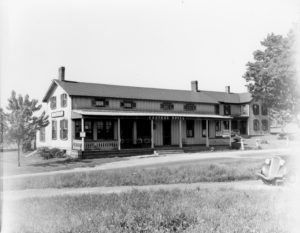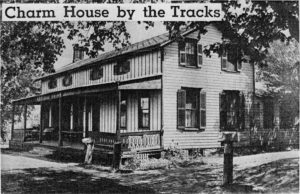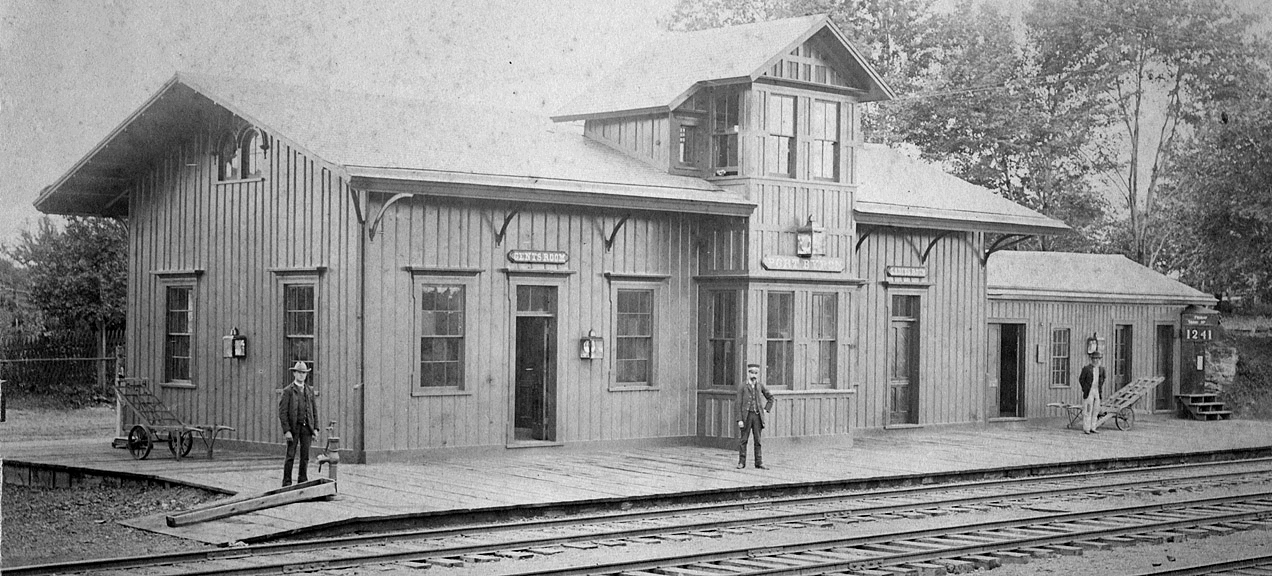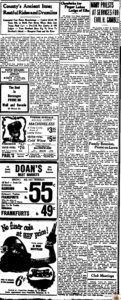It would be safe to say that June 1, 1853, would have been a momentous day in Port Byron. It was on that date that the New York Central Railroad began service along their direct route which connected Rochester and Syracuse. This new route between the two cities replaced the older route that looped south through Auburn that had been in use since the 1840s. Thus was born North Port Byron.
Prior to June 1, 1853, a traveler wishing to leave Port Byron had two choices. They could take a packet boat on the canal, which offered a two-or-three-day service to Albany or Buffalo, or the even slower stage coach. The railroad offered the possibility of leaving the village in the morning, and arriving in Albany by the evening. The station was located about a mile north of the village, where we see North Main cross the railroad tracks today. The construction of the small passenger station and depot created what was known as North Port Byron. Soon after the railroad had opened the station, the Christian family built the Central Hotel, a small two story building which would serve those travelers who had arrived early or late, and needed overnight accommodations. Later, a small grist mill would be built on the Owasco Outlet, along with a few homes, however, the settlement would grow no larger. I find it interesting that the railroad company would go through the expense of building and staffing a station at this place as they also built a station at Weedsport and Fox Ridge, only three miles to the east and west. However, these stations only saw limited service with a few local trains each day, while the express trains flew by.
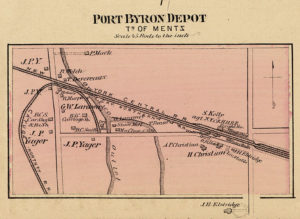
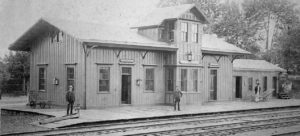
It wasn’t a totally local clientele that used the station. Passengers from Auburn found that they could save a bit of time by taking a stage coach to Port Byron or Weedsport and then head east or west. I was surprised to find a mention in the 1884 paper that said a rider had made the trip between Auburn and Port Byron in thirty-eight minutes, although it doesn’t say if this was on horseback or in a coach. Even today, this would be a decent time. Travelers could also stay at the larger Port Byron Hotel or the Howard House, can then take a stage to the station. I found short articles about stage operators David Sadler, Curtis Rumsey, and Edwin Wethey who operated a coach and omnibus service between Spring Lake and Auburn at different periods.

Another big event took place in 1884, when the New York, West Shore, and Buffalo Railway (better known as the West Shore) built a railroad to directly compete with the Central system. And for Port Byron, it was even closer to the village. The passenger station and depot would have been found along what is today Blauvelt Drive. This line was quickly absorbed into the New York Central system and served as a branch line, however the station stayed in service. And then in 1908, the Rochester, Syracuse, and Eastern Interurban trolley built it’s own line to compete for the passenger and light freight trade.
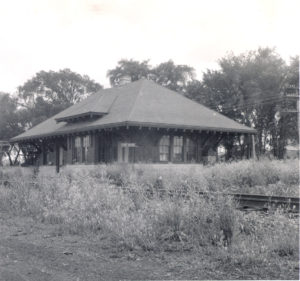
This was all very short lived. In 1931, the trolley stopped running. By the mid-1930s, only one train a day was stopping at North Port Byron, and in 1939, the company began to use a part-time station agent, stop mail service, and have all less then car load freight handled by the West Shore station. Soon after, all service ceased, and the station sat empty up till 1953 when it was removed as part of the modernization of the line. The West Shore was abandoned by the 1950s, and that station was removed around 1959.
What remained through all this was the Christian family Central Hotel. By the 1940s and 50s, the hotel had gotten a legacy all it’s own for it’s longevity. In 1948, a reporter visited Al Christian, and wrote that the building was recently electrified but did not have a refrigerator. The bar was simple with no chrome or booths, although it did have a juke box. And it only served beer. He noted that Al didn’t like crowds, and that the few clients were men who enjoyed sitting on the porch watching the trains pass by. This must have been an exciting or even sad time for Al and the guys as they watched as the steam engines gave way to the diesel-electric locomotives. Al died in 1957. The business was reborn later as the New Central Hotel, but it didn’t last.
